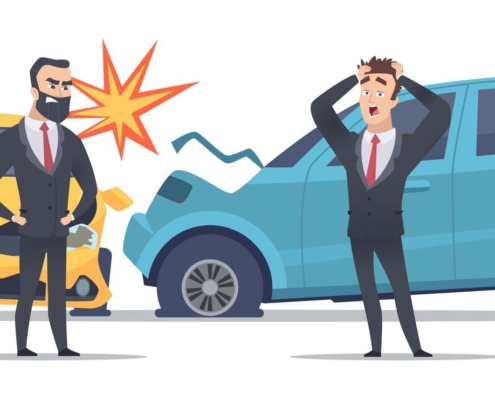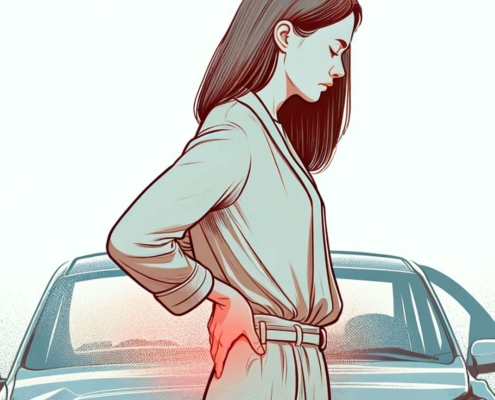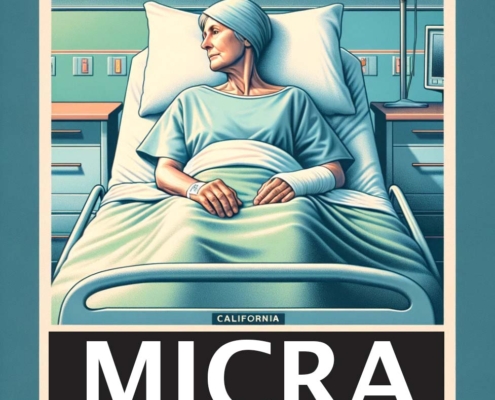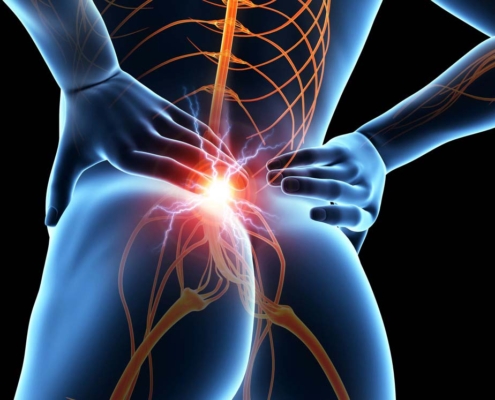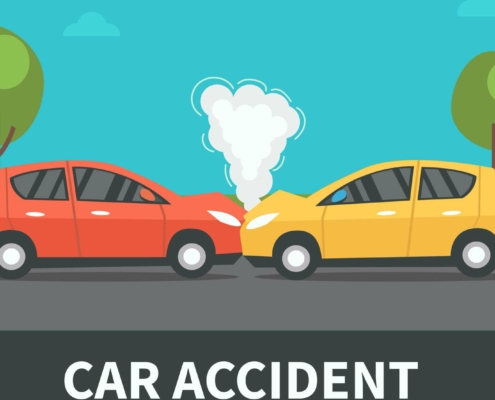What causes most rear-end accidents?
According to the NTSB, nearly 90% of rear-end accidents are caused by distracted drivers. Another common reason for rear-end accidents occurs when a driver follows too closely to the front vehicle.
Most states’ laws require drivers to follow safely behind other vehicles. A safe distance is considered to allow yourself at least three seconds to stop abruptly. Longer time should be applied if driving conditions are wet or hazardous.
- Driving under Distraction
Drivers can be distracted for different reasons while driving, which can cause a serious accident. Distractions include putting on makeup, using a cell phone, or eating. Other distractions could be looking away from the road, talking to someone else in the car, or looking in the back while driving.
- Driving under the Influence
The use of drugs or alcohol can significantly compromise the reflexes or the time to react. So, it can be the reason for serious rear-end accidents because the driver is not in his senses to judge the speed or distance accurately.
Snow, ice, mud, rain, fog, or high winds can cause difficulty for the driver to see in front of the car. They may fail to stop at the accurate time or to keep the vehicle in their lane.
A sudden stop can lead to rear-ending, but it may not always be the driver in front’s fault. Some valid reasons could cause a driver to stop abruptly. These could include trying not to hit an animal or child, an accident in front of them, police in front, or construction.
What happens to your body in a rear-end collision?
There are chances of fatal injuries or disabilities for a lifetime in any road accident, which includes rear-ending. However, the victims of rear-end collisions mostly involve damage to the soft tissues.
Some common injuries caused by rear-end accidents
- Whiplash: When the shoulder, neck, or spine are suddenly jerked or violently snapped beyond the normal allowable range, this is called whiplash. This causes serious pain and stiffness in the shoulder and neck region. The name whiplash describes the condition where a whip is snapped off due to sudden movements such as hyperflexion or hyperextension. Twenty percent of persons involved in a rear-end collision experience whiplash. Out of these victims, about 80% suffer pain and stiffness that lasts more than seven days, and about half of these victims experience suffering longer than a year.
- Back Injuries: This is another common injury resulting from a rear-end collision. This injury can be very painful. The sudden force that causes the injury can be very harmful, even at low speeds. There is the potential to compress the spine or dislocate the spine’s discs in the lower back. Bulging discs and herniated disks are common examples of injuries that occur due to rear-end accidents.
- Face or head injuries: It doesn’t take a crash at high speeds to suffer from face or head injuries. Many rear-end crashes happen at lowers speeds, i.e., lower than 20 mph. If the airbags are not deployed in a lower-speed accident, this can cause your face to collide with the steering column. This impact of force is enough to fracture your nose, jawbone, or cheek or even it can detach the retina. You might receive bruises and cuts on your face. If the airbag does deploy, you might have abrasions on your head. Arms and hand injuries can also take place.
- Seatbelts: Seatbelts are there to secure your middle body if the car is hit. Your body slams forward in a rear-end collision and hits the strap. This can result in bruises on your neck, torso, and shoulders.
Who is at fault in a rear-end collision?
Usually, the driver that is the last to hit a car in the rear end is found responsible. If you have been in a car accident, you usually seek to find payment for any damage to your body or property you have experienced.
Some states have no-fault insurance laws. If this is true for your area, you must ask your insurance company to pay for personal injuries. Med pay and Personal Injury Protection involve the payment required to cover all the expenses due to medical injuries, wages lost, and out-of-pocket expenses. The compensation for suffering and pain is not included.
In states with no-fault laws, you are permitted to seek compensation from the other driver if you are severely injured, or your PIP limit is reached.
You can file the liability claim for the damages incurred to you with the insurance company of the driver at fault if you are not living in a no-fault region.
Comparative negligence
The driver who rear-ends is usually held responsible for the rear-end accident. Normally their insurance company would payout for any loss due to their injuries.
In many states, there are laws for comparative negligence that allows you to claim compensation for your damages even though you might be partially responsible for the accident. The amount you receive for your claim will be decreased based on your amount of responsibility. An experienced attorney will be able to help prove you are not liable or lessen your amount of liability.
Here are some exceptions in case of rear-end collision liability:
- The driver ahead was not driving responsibly, and the driver in the back could not possibly prevent hitting the car in front. As long as the driver in the back was driving at a safe distance between the two vehicles.
- The driver ahead stops suddenly without putting up flares or giving notice to the traffic behind.
- The driver in the middle is a safe distance away, but another driver in the back rear-ends the middle driver into the driver in the front. The fault is found with the car in the end that pushed the middle driver into the front driver.
- If the collision happens due to rain, fog, or some other weather condition, although there was a reasonably safe distance between the two vehicles.
Be prepared to prove your claim
You might believe the accident was the driver’s fault that rear-ended you. It would help if you didn’t wait for your claim to be approved and compensation to be paid. Insurance companies train the claim adjusters to deny claims on any available excuse and minimize the compensation amount.
Here are some of the important terminologies used in claim processing by the insurance company as well as the attorney:
- Negligence: Negligence means doing any wrongful and irresponsible action while driving and failing to act within reason while on the road. An example of negligence could be driving in the opposite direction of a one-way route/road.
- Liability: Liability means the responsibility for something. In this context, liability implies that the driver is responsible for any loss or damage incurred to the victim in the accident. Duty of Care means drivers are legally bound to follow traffic laws. It implies that the driver must drive safely, stop at the red signal, avoid overspeeding, and look out properly for pedestrians and other vehicles traveling on the road.
- Duty of Care: It means you should be obliged to avoid causing any damage to others.
- Proximate Cause: Proximate cause means doing some action that can result in some accident that could have been avoided by not doing that action.
- Damage: Any personal or property loss of the victim in the accident is damage. It includes medical expenses due to injuries, any property loss, costs of services for replacement, suffering, and pain incurred by the victim due to an accident.
A rear-end accident can occur if someone stops paying attention or starts driving recklessly. It can also occur if a car’s brakes fail, and the driver knowingly refuses to fix it. These are considered negligent actions, and you are entitled to compensation in these cases.
It is your responsibility, or the proof of burden is on you to prove the other driver was negligent, which caused your damages.
You will need to show evidence of your injuries and that these occurred because of the rear-end accident.
Collect evidence for your claim
To win your claim for the damages incurred to you in a road accident, you need to prove that the at-fault driver showed negligence. In such a case, you should gather as much information as possible to meet the burden of proof and win your claim. Here is some evidence that you can claim your compensation successfully.
- Gather proof from the Scene: If you are in an accident, you must call 911. You may ask someone else to call if your injuries have disabled you. You must inform the dispatcher that you need help and are injured. If you are an injured pedestrian, you must tell the dispatcher. Describe your condition to the dispatcher and inform them of your location and any dangers like blocked danger or leaking fuel.Police or law enforcement may not show up for minimal property-damage accidents in a busy jurisdiction. Police usually respond to parking lot accidents when blocking traffic or if injuries are reported.
- Photographs and Video: You shouldn’t move the cars until you take photographs or make a video of the accident scene. It would help if you tried to take pictures from different angles and get close-up photos of the point of impact. Videos of the other driver may capture admission of fault or evidence of intoxication. Photographic evidence can help in protecting you from false accusations and prove the other driver’s fault.In case the investigation officer is administering a drunk driving test, record the action with your cell phone from as close as possible. Photographs of any bottles of beer or open cans of alcohol must be taken that can be helpful in your compensation claim.
- Witness Statements: Witnesses can greatly help prove which driver was at fault. It would help if you asked every witness for their name and contact information. Have the witness sign and date any account they may provide to you. Some witnesses will be willing to help you, while others won’t get involved. There is no obligation on the witnesses to cooperate with you.
- Notes in Detail: You should keep a diary about how the accident happened. Write detailed notes about your injuries, inability to perform daily activities, pain levels, emotional distress, and interference with family relations. Use your diary as supporting evidence for obtaining compensation for your pain and suffering.
- Police report: When the police arrive at the scene, they talk to both parties to record their statement and survey. The police officer investigating the accident prepares an official document called a report. They will add information about the witnesses and driver, statements, and diagrams of the accident site. It may include the professional opinion of the investigator about who was at fault. You can purchase a copy of this report for a nominal fee.
- Medical bills and records: If your treatment records contain the doctor’s notes, your injuries will be directly tied to the car accident. Your medical expenses will be an integral part of your compensation demand. It would help if you asked for copies of your medical bills. Keep the receipts for medical expenses you paid for, such as hospital parking fees, medications, and the fuel used for g
Contact a personal injury attorney for your rear-end auto accident
You can settle with the insurance company if you suffer minor injuries like bumps, small cuts, and bruises. You may not need to seek help from an attorney.
Calculate a fair amount of compensation by adding all the expenses for medical treatment, lost wages, and out-of-pocket costs. One or two times, the total amount can be added for pain and suffering.
Severe injuries involve a high amount of complex claims. If you are severely injured, you can have an attorney who will get the available compensation for you. It will be the attorney’s duty to find all sources of compensation to get the maximum amount.
So, do not settle so quickly for a lesser amount. Instead, consult with the attorney to get the maximum compensation for your loss.




